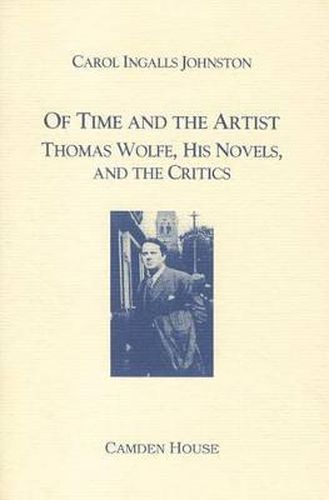Readings Newsletter
Become a Readings Member to make your shopping experience even easier.
Sign in or sign up for free!
You’re not far away from qualifying for FREE standard shipping within Australia
You’ve qualified for FREE standard shipping within Australia
The cart is loading…






This volume takes as its starting point Thomas Wolfe’s comment in his 1936 manifesto, The Story of a Novel, that ‘there is no such thing as an artistic vacuum’, arguing that literature is as much the product of the community in which it evolves as of any individual’s experience. In particular, it explores the troubled dialogue between Wolfe and his critics: Wolfe’s energies were pitted against the fashionable critical theorists of the 1920s and 1930s, and as a result, the critical debate during those years was particularly bitter, as Wolfe sought to maintain his literary reputation, often using his fiction as a means of responding to them. Johnston describes the depressionsthat Wolfe endured after bad reviews; his response to his critics both in his correspondence and in his fiction; his relationship with his publishers and his critics, and their relationship with him. Her study, which includes material not readily available elsewhere, reveals the nature not only of Wolfe’s professional career but of the literary marketplace in America during and after the 1920s.
$9.00 standard shipping within Australia
FREE standard shipping within Australia for orders over $100.00
Express & International shipping calculated at checkout
This volume takes as its starting point Thomas Wolfe’s comment in his 1936 manifesto, The Story of a Novel, that ‘there is no such thing as an artistic vacuum’, arguing that literature is as much the product of the community in which it evolves as of any individual’s experience. In particular, it explores the troubled dialogue between Wolfe and his critics: Wolfe’s energies were pitted against the fashionable critical theorists of the 1920s and 1930s, and as a result, the critical debate during those years was particularly bitter, as Wolfe sought to maintain his literary reputation, often using his fiction as a means of responding to them. Johnston describes the depressionsthat Wolfe endured after bad reviews; his response to his critics both in his correspondence and in his fiction; his relationship with his publishers and his critics, and their relationship with him. Her study, which includes material not readily available elsewhere, reveals the nature not only of Wolfe’s professional career but of the literary marketplace in America during and after the 1920s.